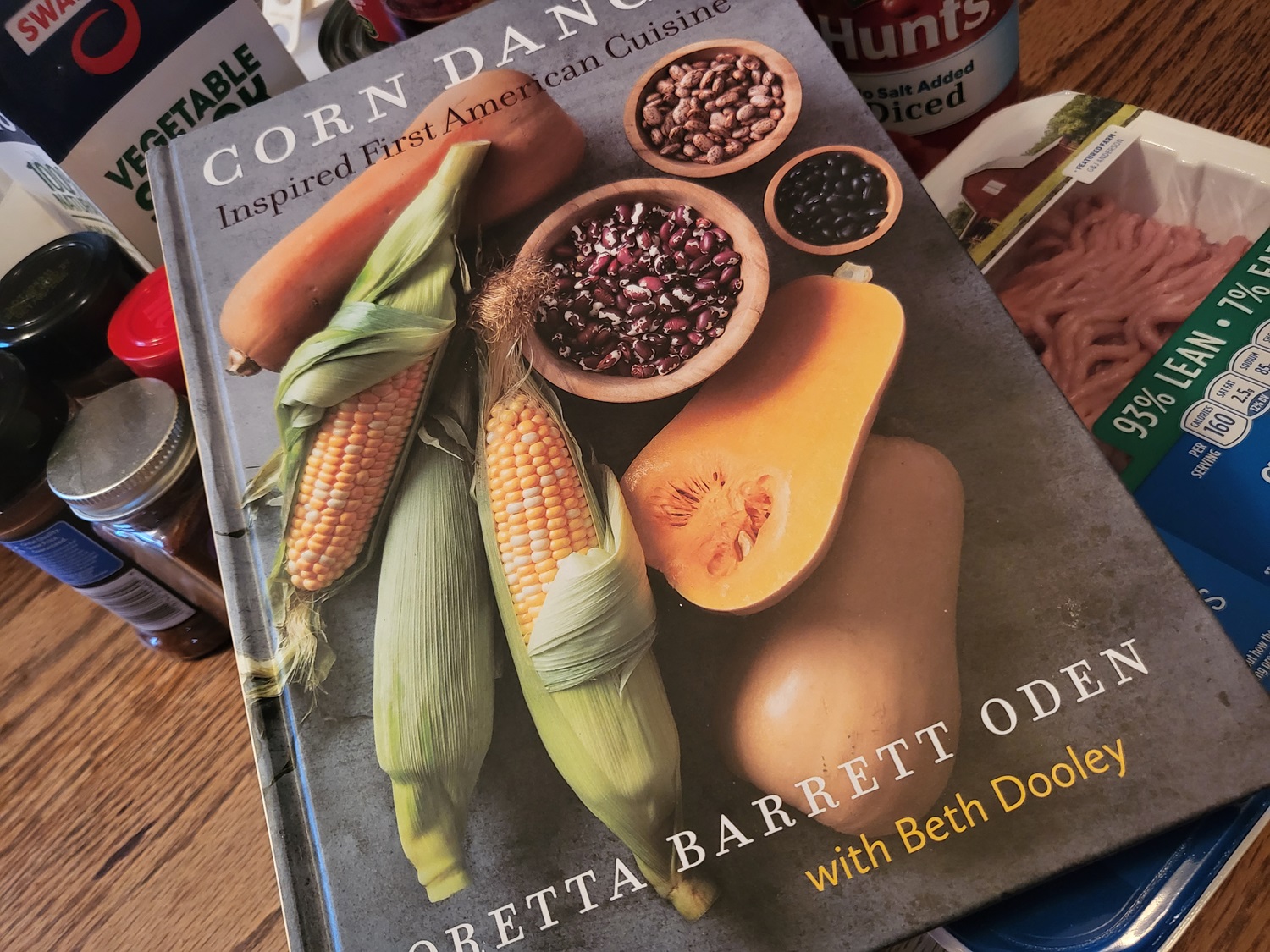With the Pioneer Woman and her disingenuous recipes looking down the barrel of Native pop-gun thanks to Killers of the Flower Moon, sadly, my own cooking adventures with my stroke-begotten hands were too much to try again…until I learned that the head chef of the First American Museum, Loretta Barrett Oden, put out a Native-themed cookbook.
I was reinvigorated to try my hand at cooking again.
Her newly published book is called Corn Dance: Inspired First American Cuisine.
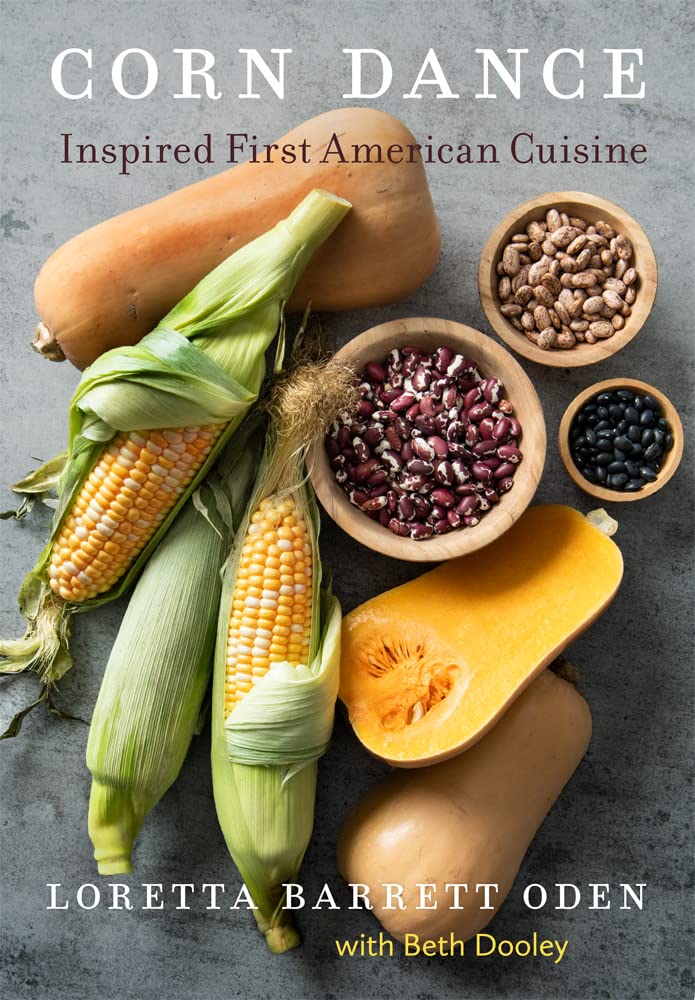
I met Oden at the FAM on their grand opening weekend when the museum-centric restaurant 39 opened. She came out and introduced herself as I was ordering some authentic lunch and, of course, more than food was discussed.
She told me that she believes Indigenous food goes well-beyond the staples of Native tacos and frybread, and the culinary landscape she paints highlights plenty of game, vegetables, and seasonings; traditional ingredients with some new stylings.
I ordered the book and, to be honest, I was floored by how in-depth she went with the food and the culture. With stories peppered throughout out, Corn Dance made me feel like a true Indigenous chef—which I am not, mind you—with recipes from Three Sisters and Friends Salad to Barbecue Bison Brisket.

But, with the holidays creeping around the corner, I decided to take a stab on the frost-busting Turkey Hominy Stew, a truly festive come down with none of the mashed potatoes, stuffing, and yams you’d otherwise be ingesting with the immediate family.
Most of my ingredients I had down pat, with the exception of, iconically, the turkey stock; instead, I used vegetable stock. With that replacement, I was ready to go.
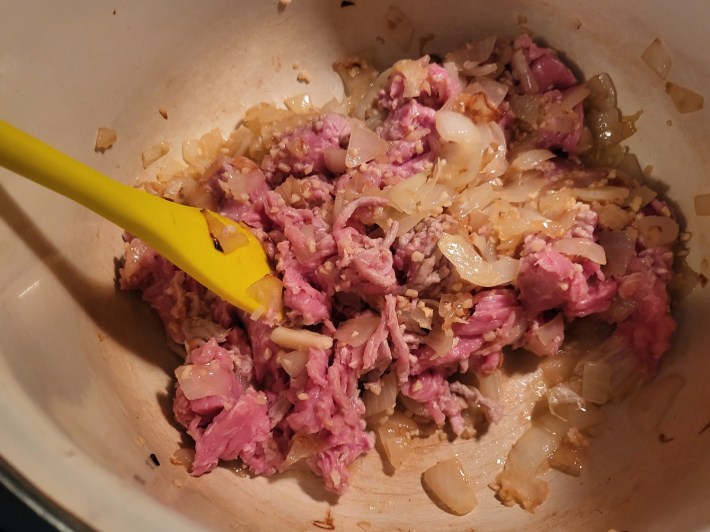
I started to brown the onions and garlic in the pot. After a few minutes, I added a pound of ground turkey and, before my eyes, this culinary creature began to take shape as the magical plume of mouthwatering steam filled my sinuses with intense flavor.
Already, I was in heaven with the recipe and I worked the spoon, making sure the meat never burned. Take that, Pioneer Woman!
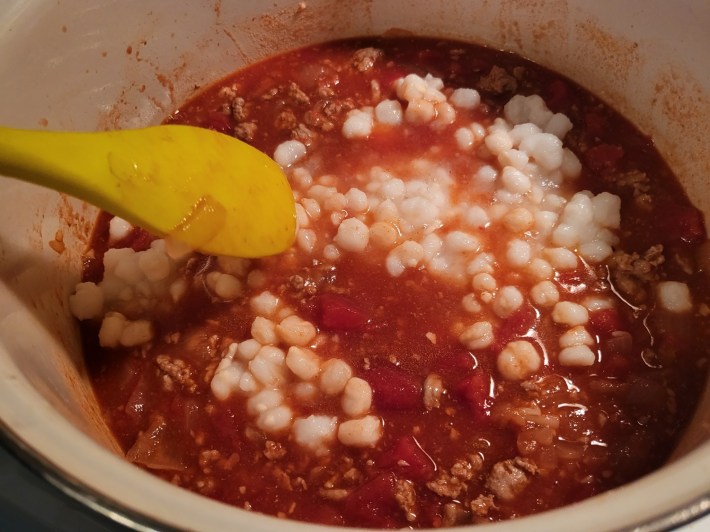
With the turkey and onions ready to go, I put in the various spices—cumin, chili powder, cayenne—and the most important part of the recipe – the white hominy. While many people don’t use hominy these days, I grew up with it because my late father had it on his chili fixings and here, it was brought back.
Ingredients combined, I let it simmer on the stove for about two hours on low-heat. Coming back to find a ready to serve soup, I went ahead and fixed myself a bowl…and it was summarily amazing!
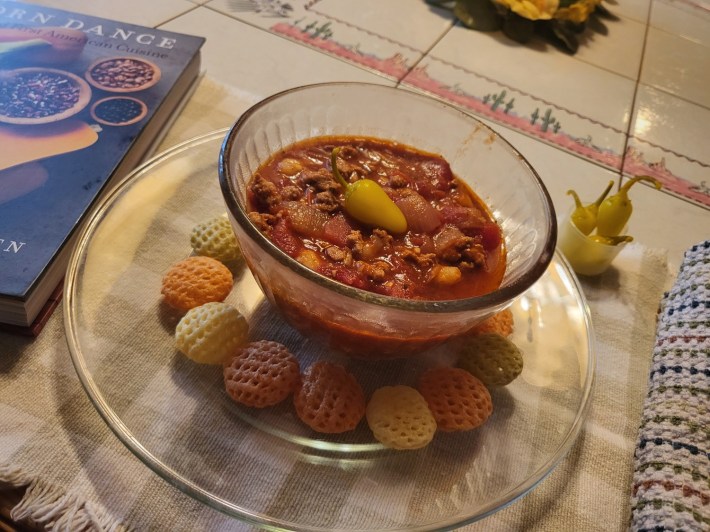
The flavor can’t be beat, as the turkey and the hominy give a whole feeling of holiday combustibles rocking around the non-denominational tree. With the exciting spices of chili powder and cayenne, it has to power to wake you up, and you want to stay up with up.
With two bowls down, I felt the spirits of the Indigenous kitchen spilling over, with a power that both Native women and Native men can attain and forever possess—and hopefully pass on to the next generation.
And if a redhaired white woman tries to take this recipe from you, tell them Loretta sent you. Yakoke!
-
Follow Louis on Twitter at @LouisFowler and Instagram at @louisfowler78.
